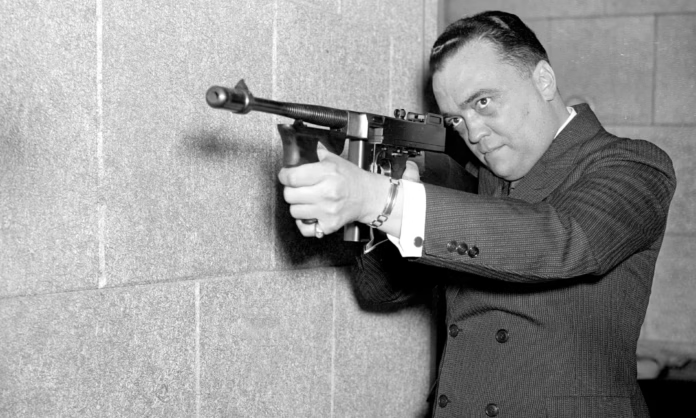John Oller’s new book dives into the dramatic takedown of America’s most infamous criminals of the 1930s. Think John Dillinger, Baby Face Nelson, and Bonnie and Clyde – the names that ruled headlines during the Great Depression. But Oller’s Gangster Hunters isn’t just about the crooks. It’s about the lesser-known FBI agents who risked everything to bring them down.
In the 1930s, with President Franklin D. Roosevelt declaring a “war on crime,” the FBI went after these gangsters with everything they had. The bank robbers were like celebrities, with larger-than-life myths growing around them. Oller sets the record straight, debunking some of the legends while spotlighting the real heroes of the chase – agents whose names history has mostly forgotten.
Why don’t we know more about these FBI agents? According to Oller, it’s partly because J. Edgar Hoover, the man in charge of the FBI for nearly half a century, wanted it that way. “Hoover was a master of self-promotion,” Oller says. “If anyone was going to represent the FBI, it was going to be him. The agents? They were supposed to stay in the shadows.”
Oller’s book digs into the stories of these shadowy figures. He tracked down descendants of the agents, piecing together their stories from family accounts and archives. Names like Walter F. Trainor, Johnny Madala, and Bill Rorer come to life as Oller recounts their daring missions, including the capture of the notorious Machine Gun Kelly (the gangster, not the rapper).
The book also explores how dangerous it was to be an agent back then. These were mostly young lawyers who couldn’t land Wall Street jobs during the Depression. Many had never even fired a gun before joining the FBI. Yet, they were handed Tommy guns and sent to hunt down killers like Baby Face Nelson, who gunned down agents in firefights.
Oller doesn’t shy away from critiquing Hoover, whose FBI wasn’t always the noble crime-fighting machine people think. While Hoover was chasing small-town bank robbers and kidnappers, critics point out that he largely ignored organized crime. Mobsters like Al Capone were raking in profits from gambling, drugs, and bootlegging in the big cities, but Hoover focused on flashy gangsters like Dillinger. Why? Probably because they made for better headlines.
It was a different world back then. Banks were hated by many during the Great Depression, so some people saw bank robbers as folk heroes. Criminals like Pretty Boy Floyd were even celebrated in songs. Stories spread about Floyd tearing up mortgages to save struggling farmers, though Oller points out that this was probably just a good story. Still, during those hard times, anyone who stuck it to the banks could seem like a hero.
But Oller makes it clear these criminals were no saints. Bank robberies often turned violent, with innocent people caught in the crossfire. Bonnie and Clyde, for example, were more famous for their daring lifestyle than the tiny amounts of money they actually stole. The photos of Bonnie smoking a cigar and pointing a gun at Clyde fueled their legend more than their crimes ever could.
Kidnapping was another crime that caught the FBI’s attention. The book starts with the infamous abduction of Charles Lindbergh’s baby in 1932, a case that gripped the nation. Oller also tells the stories of wealthy businessmen like William Hamm and Charles Urschel, who were snatched for ransom. These cases hit close to home for President Roosevelt, whose friends were directly impacted.
Oller’s deep dive into history goes beyond the gangsters and agents. He also looks at how these stories were told at the time, from pulp magazines like True Detective to today’s true-crime podcasts. It turns out, some of those old pulp stories weren’t as exaggerated as you might think. They even helped catch a few criminals!
With a background in journalism and law, Oller brings a detective’s eye to his research. He’s solved mysteries before – one of his earlier books helped close a decades-old murder case. In Gangster Hunters, he’s out to give credit where it’s due, shining a light on the FBI agents who fought crime when the odds were stacked against them.
The result is a gripping, fast-paced story that reads like a Hollywood thriller – except it’s all real. It’s a reminder that while the gangsters got the headlines, the real drama was with the people who brought them to justice.
